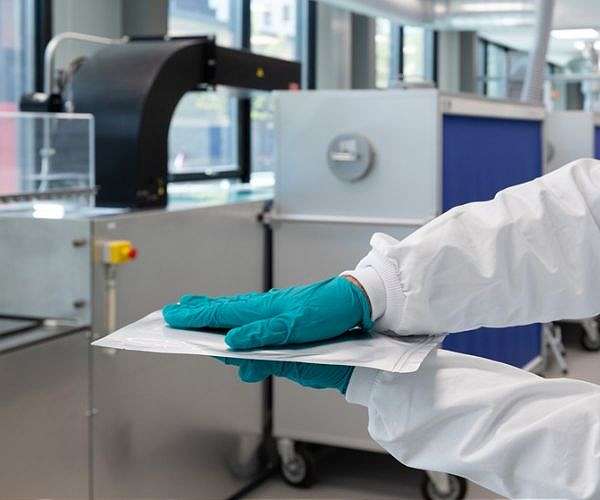Brick-based super battery that will revolutionize electric cars
In ten years, solid-state batteries derived from rock silicates will be a greener, more efficient and safer alternative to today’s lithium-ion batteries. Researchers at the Technical University of Denmark (DTU) have patented an innovative superionic material made from potassium silicate, a mineral that can be extracted from ordinary rock.
Currently, the range and charging speed of electric car batteries are limited by lithium-ion technology, which also poses environmental and supply chain challenges. Lithium is costly, harmful to the environment and in short supply, potentially hindering widespread adoption of electric vehicles.
As demand for electric cars grows, the development of new lithium-free batteries becomes essential. These batteries should meet or exceed current efficiency levels while being more environmentally friendly and cost-effective. This challenge stimulates research into new battery materials and designs, which are critical to reducing the carbon footprint of the transportation sector.
DTU researcher Mohamad Khoshkalam has developed a promising material for the next generation of batteries: solid-state batteries that use potassium and sodium silicates, common minerals found in the Earth’s crust. These materials, sourced from everyday rocks, are not sensitive to air and humidity, allowing them to be poured into the battery in ultra-thin layers.
Patented superionic material
The newly patented potassium silicate material is economical, environmentally friendly and abundant, covering more than 90% of the Earth’s surface. It conducts ions effectively at approximately 40 degrees Celsius and is moisture resistant. This enables safer, cheaper and more scalable battery production as it can take place in open environments at near room temperature. Additionally, it eliminates the need for expensive and harmful metals such as cobalt, which are used in today’s lithium-ion batteries to improve performance and longevity.
“The potential of potassium silicate as a solid-state electrolyte has long been known, but in my opinion has been ignored due to problems with the weight and size of the potassium ions. The ions are large and therefore move more slowly,” says Mohamad Khoshkalam.
To understand Khoshkalam’s discovery, the vital role of electrolyte in a battery must be recognized. The electrolyte, which can be liquid or solid, allows ion movement between the anode and cathode, maintaining the electric current during charging and discharging. Conductivity depends on ion mobility, which is traditionally slower in rock silicates due to their larger size compared to lithium-based electrolytes. However, the process of Khoshkalam accelerates the ion movement in potassium silicate, improving its conductivity.
“The first measurement with a battery component showed that the material has very good conductivity as a solid electrolyte. How I developed the material I cannot reveal as the recipe and method are now patented,” continues Mohamad Khoshkalam.
The battery of the future
Solid-state batteries are seen as the future by researchers and electric car manufacturers. Recently, Toyota announced plans to launch a vehicle with a lithium solid-state battery by 2027-2028. However, previous announcements faced setbacks. Unlike conventional batteries, solid-state batteries use solid electrolytes, which allow ions to move faster, improving efficiency and reducing charging time.
A battery cell can be as thin as cardboard, with ultra-thin layers for the anode, cathode and electrolyte, allowing for more powerful, more compact batteries. This can translate into driving up to 1,000km on a single 10-minute charge. In addition, solid-state batteries are safer because they do not contain flammable liquid components.
Yet significant challenges remain before solid-state batteries reach the market. Although the technology is successful in laboratories, it is difficult and expensive to scale up. Materials and battery research is complicated and slow and requires sophisticated laboratories and equipment. Even after twenty years, lithium-ion batteries are still being developed.
In addition, new production methods are needed to ensure that the ultra-thin layers in battery cells remain intact. Although high-pressure techniques work in laboratories, translating them to commercial batteries is complex.
High risk, high reward technology
Solid state batteries based on potassium and sodium silicates have a low Technology Readiness Level (TRL), indicating a long journey from discovery in the laboratory to market implementation. Despite the challenges, Khoshkalam remains optimistic.
“We have shown that we can find a solid-state electrolyte material that is cheap, efficient, environmentally friendly and scalable – and that even outperforms lithium-based solid-state electrolytes,” he said.
Khoshkalam has patented his discovery and founded the start-up K-Ion to develop these components for battery companies. Supported by DTU’s Earthbound initiative, K-Ion aims to accelerate the transition from laboratory research to societal impact.
The next step is to create a demo battery that can be shown to companies and investors. A prototype is expected in 1-2 years.


